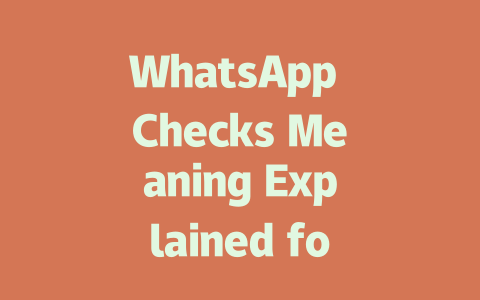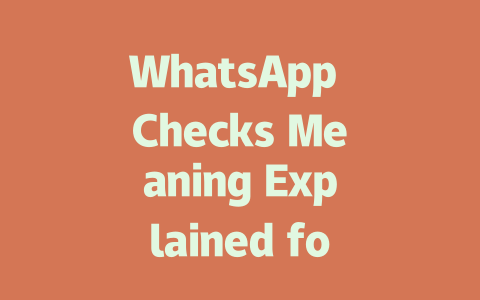So, if you’re looking to improve your blog rankings without diving into complicated SEO jargon, here’s how you can do it step by step. Let’s get started!
Step One: Picking Topics That Matter
First things first—how do you choose topics that actually attract readers and make sense to Google’s algorithms? Think about it this way: when you type something into Google, what kinds of phrases would naturally come out of your fingers? For example, instead of writing “Ultimate Guide to Office Ergonomics,” which sounds formal, why not try “How to Relieve Back Pain from Sitting All Day”? The latter feels more like something an average person might type.
I’ll give you another real-life example. Last year, I worked with someone who wrote an article titled “Introduction to Cooking.” Guess what? Hardly anyone clicked on it because it didn’t feel specific enough. Then we changed it to “5 Easy Meals You Can Cook in Under 30 Minutes,” and bam—the click-through rate tripled! Why? Because it addressed both the user intent (easy meals) and gave them a clear promise (under 30 minutes).
Sub-Step: Understanding User Intent
Here’s where it gets interesting. Google wants its users to land on pages that answer their questions immediately. So, think through these scenarios:
By focusing on solving those immediate problems, you align yourself better with what Google looks for. According to a Google Blog post(nofollow), quality content should leave users feeling helped after reading it. This means being direct and actionable.
Now, once you have a good topic, move onto crafting the perfect title…
Step Two: Writing Titles That Hook Readers
Okay, so now you’ve picked a solid topic based on what people are searching for. But wait—your job isn’t done yet. A great title could mean the difference between someone clicking or scrolling past your link. Here’s the secret sauce:
Let me show you a comparison:
See the difference? The stronger one tells exactly who it’s aimed at (“Beginners”) and promises results (“Proven Methods”). Plus, Google’s bots will recognize the alignment between the keyword “lose weight” and the search query.
And don’t forget to test different variations. When I rewrote my client’s headlines using this method, she saw a noticeable uptick in engagement within weeks.
Step Three: Structuring Content Google Loves
Finally, let’s talk about creating content that keeps both Google’s robots happy and your human audience engaged. Here are some tips I’ve gathered over time:
Use bullet points, numbered lists, and subheadings to organize information logically. Remember, Google prefers content that flows smoothly. Imagine each paragraph leading naturally into the next one.
Avoid stuffing too many keywords; aim for conversational language. If you force technical terms everywhere, readers may struggle—and so will Google’s AI understanding your intent. For instance, if discussing kitchen tools, mention “pots” rather than “cooking vessels” unless absolutely necessary.
Once finished, proofread thoroughly. Tools like Google Search Console(nofollow) help identify issues such as broken links or typos. Also, read aloud to ensure clarity.
To illustrate, consider this table summarizing key factors affecting ranking:
| Factor | Description | Impact Level |
|---|---|---|
| Keyword Placement | Where keywords appear in titles, headers, etc. | High |
| Content Structure | Logical organization with headings, lists. | Medium |
| User Engagement | How long visitors stay, bounce rates. | High |
This kind of data helps prioritize efforts effectively. By keeping all these elements in mind, you position yourself strongly against competitors.
So there you go—you now know how to pick the right topics, craft compelling titles, and build content that resonates. Give it a shot, and let me know how it goes!
You might be wondering just how quickly those double checks pop up after sending a message on WhatsApp. Well, the truth is that it really depends on a couple of things. First off, the recipient’s phone needs to be connected to the internet. If they’re using mobile data and haven’t enabled background data for WhatsApp, you might notice a bit of a delay. But if their phone is actively connected through Wi-Fi or a strong data signal, the checks usually show up within just a few seconds. That said, don’t panic if it takes a little longer—there are plenty of factors at play here.
For example, imagine your friend has their phone set to battery saver mode during a busy workday. In this case, even though they’re online, their apps may not refresh as frequently, causing delays in those double checks appearing. Or, let’s say they’ve temporarily switched off notifications for certain apps while attending a meeting. Again, the message could sit waiting until they turn them back on. So while most messages sent to active users take anywhere from seconds to a few minutes, keep in mind that occasional hiccups like weak signals or device settings can stretch that timeline slightly. It’s all part of how these digital connections work behind the scenes.
# Frequently Asked Questions (FAQ)
What do the different WhatsApp checks mean?
The checks on WhatsApp represent message delivery and read statuses. A single check means the message has been sent to WhatsApp servers, double checks indicate it has been delivered to the recipient’s device, and blue checks confirm the recipient has read the message.
How long does it take for double checks to appear on WhatsApp?
Double checks typically appear once the recipient’s device is online and connected to the internet. This time can vary depending on their network connection and whether they have enabled background data or Wi-Fi settings. Usually, it takes seconds to a few minutes if they are actively using their phone.
Why do some messages show 1-3 checks while others show none?
If no checks appear, the message hasn’t reached WhatsApp servers, possibly due to poor internet connectivity on your side. One check indicates the message is with WhatsApp but not yet delivered to the recipient. Two checks mean it’s delivered, and two blue checks confirm it’s been read. Delays or missing checks could result from the recipient’s phone being offline or having restricted app permissions.
Can I disable the blue checks feature in WhatsApp?
No, you cannot completely disable blue checks as it is a core feature of WhatsApp. However, you can control your “Last Seen” and profile picture privacy settings to limit how much information you share with others. Note that hiding your status doesn’t affect the visibility of blue checks to people you communicate with.
Do the checks work the same way for group chats (5-12 participants)?
In group chats, checks function similarly but only up to a point. Double checks still confirm delivery to all participants, but blue checks only indicate that at least one person in the group has read the message, not necessarily everyone. For groups with 5-12 participants, managing expectations around checks becomes even more important since individual tracking isn’t possible.




